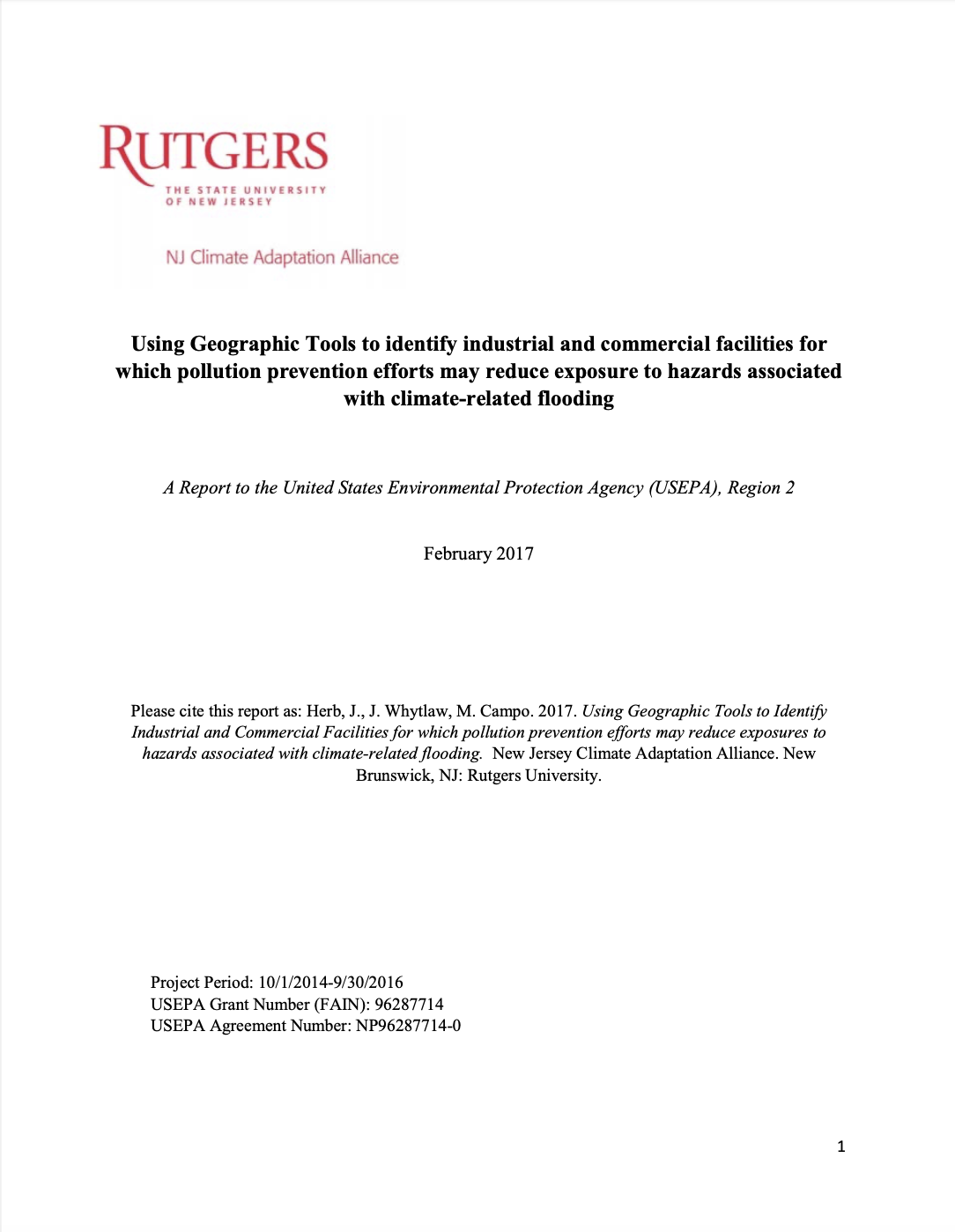The United States Environmental Protection Agency (EPA) Pollution Prevention Program provided Rutgers University with a grant to use geospatial analytical tools to analyze publicly available state and federal environmental data, along with data regarding current and projected flood hazards and changing climate conditions, to inform state and federal program’s operations, local resilience planning and public awareness about potential flood hazards. Rutgers identified active industrial and commercial facilities in New Jersey that may be subject to impacts from flood hazards resulting from changing climate conditions, thus creating potential future exposures in communities where the facilities reside. The data and presentation products from the project can inform federal, state and local environmental program operations (e.g. facility inspections), raise awareness about potential flood hazards in the proximity of industrial and commercial operations, and assimilate data that is useful for enhancing resilience considerations in local hazard mitigation and land use planning processes.
Using Geographic Tools to identify industrial and commercial facilities for which pollution prevention efforts may reduce exposure to hazards associated with climate-related flooding
Citation:
Herb, J., J Whytlaw, and M. Campo. 2016. Using Geographic Tools to identify industrial and commercial facilities for which pollution prevention efforts may reduce exposure to hazards associated with climate-related flooding. Prepared for the United States Environmental Protection Agency. New Brunswick, NJ: Rutgers University.
